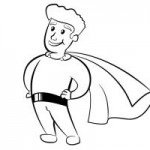So how do we know how our characters think? Maybe you completed the character freewrite or interview exercises last week. Maybe you’ve filled out extensive character questionnaires. Maybe you only have a sketchy mental picture of a new character. No matter how well you know your character, you can help to make sure her thoughts—her voice, her feelings—come through in your writing in what she notices, how she talks/thinks about it and how she feels about it.
What they notice
 My friend Annette posted the other day about “lenses.” She tells how on a visit to New York with her mother and sisters, they were each drawn to attractions that appealed to their personal interests—things that the rest of the family didn’t even notice.
My friend Annette posted the other day about “lenses.” She tells how on a visit to New York with her mother and sisters, they were each drawn to attractions that appealed to their personal interests—things that the rest of the family didn’t even notice.
Personal interests for your characters might arise from simply the need to “round them out” and make them more full, or they can influence the plot (she hates baseball? Fantastic—he’s a semi-pro shortstop.). When you’re just starting to design a character, even one simple interest can help to create deeper characterization.
Does your character have a passion for painting? Collect baseball cards and rare comics? Live for the dance? If not, why not? Everyone has something he loves&hobbies, interests, even their occupation. The architect might admire the layout of the museum while her dabbling-in-interior-decorating sister is more focused on the color scheme. Their wannabe-artist father, of course, is there for the art, while their hobby-egyptologist mother wants to hurry up and get to the mummies.
Our personal interests often filter what we see around us. The father in the above family might be the only one who really notices the paintings, but he barely glances at the dessicated bodies. These interests also influence our perceptions of those things that we do manage to notice.
Character vocabulary
A character’s personal interests, hobbies and especially profession not only filter what they notice, but the words they use to describe it—from the scenery to the events to the other people in the story.
I, for example, can’t tell a sloop from a schooner. But someone who spends every weekend on his sailboat is going to have a full vocabulary for not just every type of ship, but the masts, the rigging, the knots, the . . . other stuff.
 Let’s say that character identifies himself, essentially, as a sailor, despite his day job in sales (*snicker*). When he meets a beautiful woman, is he going to think of her using the vocabulary of fashion? He might like the cut of her jib (that’s a sailing term trying to be a play on “fashion” and “cut,” not an innuendo), but unless she’s wearing a spinnaker (another sailing term—a sail. Very Little Mermaid.), I doubt he cares much about her dress.
Let’s say that character identifies himself, essentially, as a sailor, despite his day job in sales (*snicker*). When he meets a beautiful woman, is he going to think of her using the vocabulary of fashion? He might like the cut of her jib (that’s a sailing term trying to be a play on “fashion” and “cut,” not an innuendo), but unless she’s wearing a spinnaker (another sailing term—a sail. Very Little Mermaid.), I doubt he cares much about her dress.
Instead, he might use more . . . you know, “nautical” terms—the vocabulary of his passion. At this point, I’ve made it fairly obvious that I know nothing about sailing, but for lack of anything better, he might describe how she moves through the clumps of people like a cutter slicing through the waves. She could have eyes the color of the sea, hair the same shade as the burnished mahogany fittings of his cabin. (Okay, this dude is really starting to wax poetic for a guy, but maybe the sea does that to some people.)
The more parallels our character can draw to the things around him and his passions, the more likely he is to like those things.
Character attitudes
The character’s attitude toward the things and people around him is another important aspect of his character—and his voice. Perhaps most importantly, character attitudes are a strong characterization tool. When we see how someone feels about the world around him, we really get to know him. If he recoils at a church and quotes Karl Marx to himself (“Religion is the opiate of the masses.”), we know him more deeply than if the author just told us that “Jimmy hated religion.”
Again, his interests, hobbies and profession can influence this heavily. Our sailor friend might think a man whose only maritime experience was on a ferry to be a troglodyte. Put your  character working in an urban environment. Freeway tunnels are the epitome of all that’s wrong with the city—they’re closed in, suffocating, dark, crowded, and most of all, nothing like the freedom of sailing, the open ocean, the wind in your face.
character working in an urban environment. Freeway tunnels are the epitome of all that’s wrong with the city—they’re closed in, suffocating, dark, crowded, and most of all, nothing like the freedom of sailing, the open ocean, the wind in your face.
On the other hand, he loves taking his lunch on the observation deck of his building—when the wind is right, you get a breeze from the sea. He has an immediate affinity for people who strike him as sailors. And your Nautica bathroom decor? Well, you decide—he could either love the touch of sailing in your home, or he could think you’re a total poseur.
The slob might not even see the pile of clean (or are they dirty?) socks on the floor, simply walking past. But her neat-freak roommate is sure to notice—and she sees whether they’re clean, dirty, or a mix of the two—and then what does she think of her slovenly roommate? (Hello, Odd Couple!) If the neat-freak is a housekeeper or maybe a professional organizer, does she have a specific term for someone like her roomie?
What other ways can we incorporate and convey our characters’ voices?
Photo credits: 3D glasses—Harry Fodor; Sailboat—Horton Group; Anchor print—mckenna71
 Okay, you guessed it—just like a character who just gets more and more bad stuff piled on, a character who’s easily and confidently stronger than every challenge he faces isn’t really sympathetic.
Okay, you guessed it—just like a character who just gets more and more bad stuff piled on, a character who’s easily and confidently stronger than every challenge he faces isn’t really sympathetic. One of the ways we try to show characters suffering to help build sympathy is through their backstory. We show them growing up, or use flashbacks and memories to show the injustices they’ve suffered. His father was always at work, his mother denied him jelly on his peanut butter sandwiches, his first girlfriend dumped him for a jerk, his first wife cheated on him, his boss doesn’t recognize his work, even his dog doesn’t appreciate him.
One of the ways we try to show characters suffering to help build sympathy is through their backstory. We show them growing up, or use flashbacks and memories to show the injustices they’ve suffered. His father was always at work, his mother denied him jelly on his peanut butter sandwiches, his first girlfriend dumped him for a jerk, his first wife cheated on him, his boss doesn’t recognize his work, even his dog doesn’t appreciate him.  .)
.) Whether we like Scarlett O’Hara or not (and we probably don’t early in the book), we sympathize with her when her impassioned declaration to Ashley (and his wussy rejection of her) turns out to be overheard by, of all people, the arrogant Rhett Butler. The anguish… the embarrassment! We know just how she feels, and somehow we feel even more because our sympathy is unwilling, because we don’t WANT to identify with this snotty little flirt. And we don’t identify with her… that is, until something bad happens to her that we can actually imagine happening to us.
Whether we like Scarlett O’Hara or not (and we probably don’t early in the book), we sympathize with her when her impassioned declaration to Ashley (and his wussy rejection of her) turns out to be overheard by, of all people, the arrogant Rhett Butler. The anguish… the embarrassment! We know just how she feels, and somehow we feel even more because our sympathy is unwilling, because we don’t WANT to identify with this snotty little flirt. And we don’t identify with her… that is, until something bad happens to her that we can actually imagine happening to us.  Kindness to small children and animals isn’t enough—just about anybody but the absolute worst psych- or sociopath is nice to his mother and his babies. Saving orphans from a burning building isn’t going to be enough on its own, either.
Kindness to small children and animals isn’t enough—just about anybody but the absolute worst psych- or sociopath is nice to his mother and his babies. Saving orphans from a burning building isn’t going to be enough on its own, either. What does it mean to have a “sympathetic” character? It means that the reader can relate to him/her. The reader feels the things s/he feels, and the reader understands the difficulties that character is going through. (It doesn’t always mean, however, that the reader likes the character, though that can be helpful.)
What does it mean to have a “sympathetic” character? It means that the reader can relate to him/her. The reader feels the things s/he feels, and the reader understands the difficulties that character is going through. (It doesn’t always mean, however, that the reader likes the character, though that can be helpful.)